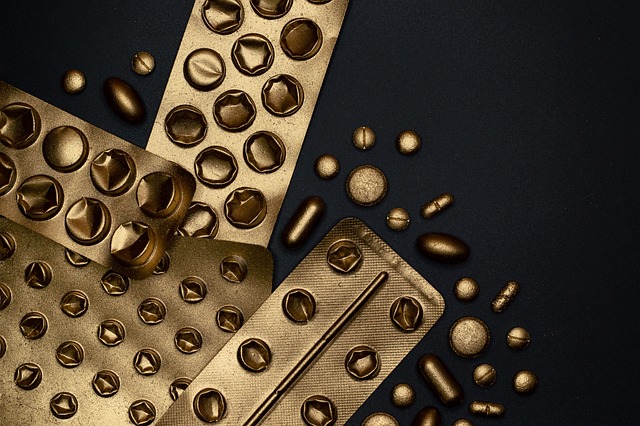Cold therapy, including cryotherapy and ice packs, is an effective and natural method to manage joint pain and inflammation. It accelerates post-workout recovery by reducing blood flow to injured areas and minimizing the body's inflammatory response. Studies show significant pain relief for arthritis patients, making it a powerful long-term strategy for managing joint issues. By limiting prostaglandin production and constricting blood vessels, cold therapy reduces swelling and alleviates pain, offering immediate comfort and preventing future damage. Incorporating cryotherapy or ice packs into your routine is an accessible, affordable game-changer for those seeking natural relief from joint soreness, especially with conditions like arthritis.
“Unwind and recover effectively with the power of cold therapy for post-workout joint pain. This comprehensive guide explores how ice packs can become your secret weapon against arthritis and inflammation. Discover the science behind cryotherapy and its numerous benefits for joint health. From reducing swelling to expediting recovery, learn why incorporating cold compresses into your routine is a game-changer. Uncover the natural healing properties of cold water therapy and embrace a holistic approach to managing joint soreness.”
Understanding Cold Therapy for Joint Pain Relief
Cold therapy, also known as cryotherapy, has long been recognized as an effective method for managing joint pain and inflammation, especially post-workout soreness. This natural approach involves applying cold or ice packs to the affected areas to reduce swelling and numb the pain receptors. The benefits of cold compresses for joints are well-documented, with studies showing that ice therapy for arthritis can significantly alleviate discomfort and improve mobility.
When used promptly after a strenuous workout, cold water therapy can accelerate joint recovery. By reducing blood flow to the injured area, cold packs help minimize damage and reduce the body’s inflammatory response. This not only provides immediate relief from pain but also helps prevent further inflammation and tissue damage, making it an excellent strategy for those seeking long-term natural joint pain relief.
Ice Packs: An Effective Tool for Reducing Inflammation
Ice packs are an effective tool in the battle against post-workout joint soreness and inflammation. Cold therapy, or cryotherapy, has been shown to significantly reduce pain and swelling associated with arthritis and other joint conditions. The application of cold compresses on sore joints can limit the body’s production of prostaglandins, which are chemicals responsible for causing pain and inflammation. By reducing these compounds, ice packs provide natural joint pain relief, enhancing joint recovery after intense physical activity.
The benefits of incorporating cold water therapy into your post-workout routine are numerous. It not only accelerates the healing process but also helps to prevent future soreness and injury. Whether it’s a simple cold pack or a specialized cryotherapy session, this low-cost approach offers a safe and effective way to manage joint discomfort, making it a game-changer for folks seeking natural remedies for arthritis and other joint-related issues.
Benefits of Incorporating Cryotherapy into Your Post-Workout Routine
Incorporating cryotherapy into your post-workout routine offers a plethora of benefits for managing joint soreness and promoting faster recovery, especially for those dealing with arthritis or chronic inflammation. Cold therapy is renowned for its ability to reduce swelling and alleviate pain in joints affected by conditions like arthritis, making it an attractive natural remedy for many. By applying ice packs or immersing yourself in cold water therapy, you initiate a process that constricts blood vessels, decreasing blood flow to the affected area, which helps to minimize inflammation.
Additionally, cryotherapy stimulates nerve endings, sending signals to the brain that block pain messages, providing much-needed relief from post-workout aches and pains. Regular use of cold compresses can aid in joint recovery by reducing muscle stiffness and spasms, ensuring your body is better equipped for future workouts. This natural joint pain relief method is accessible, affordable, and can be easily incorporated into your daily post-exercise routine, making it a game-changer for active individuals seeking to optimize their performance and well-being.
Natural Joint Care: Exploring the Power of Cold Water Therapy
Cold therapy for joint pain has emerged as a powerful tool in the realm of natural joint care, offering significant benefits for those seeking relief from post-workout soreness and chronic conditions like arthritis. By immersing joints in cold water, individuals can experience reduced inflammation and pain, essential aspects of effective joint recovery. The cryotherapy approach involves applying ice packs or cold compresses to affected areas, a simple yet effective method that has gained popularity among athletes and those committed to natural wellness routines.
The benefits of cold compresses for joints extend beyond immediate pain relief. Regular exposure to cold water therapy can accelerate the body’s natural healing process, fostering a more robust joint structure. This therapeutic practice helps constrict blood vessels, reducing blood flow to the affected area, which in turn minimizes swelling and inflammation. As a result, individuals may notice improved mobility and flexibility over time, making it an excellent complement to traditional arthritis management strategies.
Incorporating cold therapy into your post-workout routine can significantly alleviate joint soreness and accelerate recovery. As discussed, ice packs and cryotherapy are effective tools to reduce inflammation and provide natural joint care. By understanding the benefits of cold compression for joints, you can manage arthritis pain and speed up muscle repair. Whether it’s using ice packs or exploring the power of cold water therapy, these methods offer a safe, accessible, and efficient way to maintain joint health and mobility.
